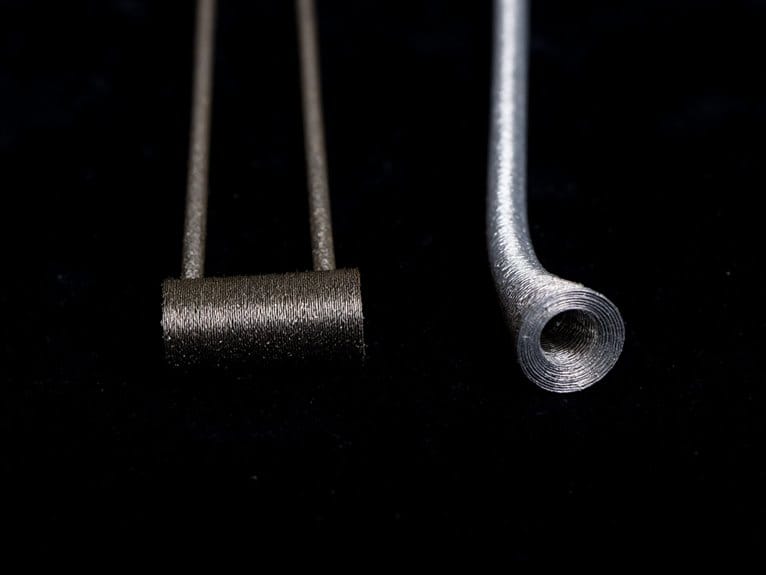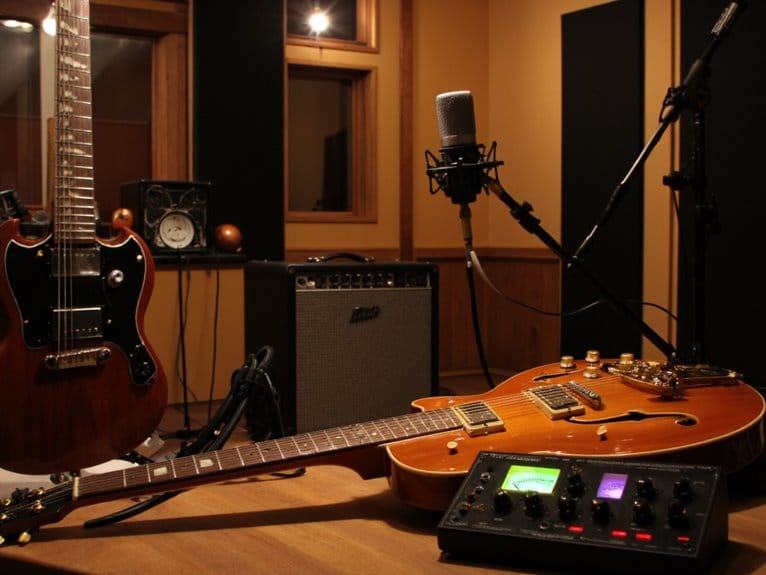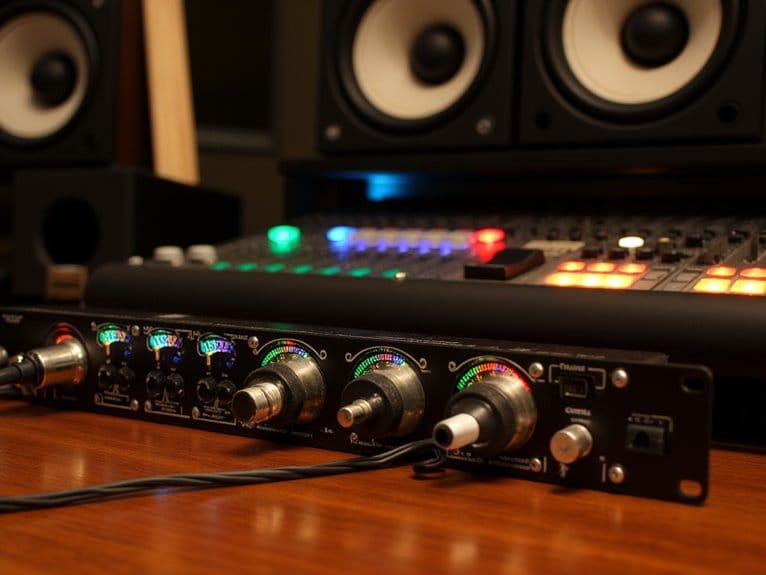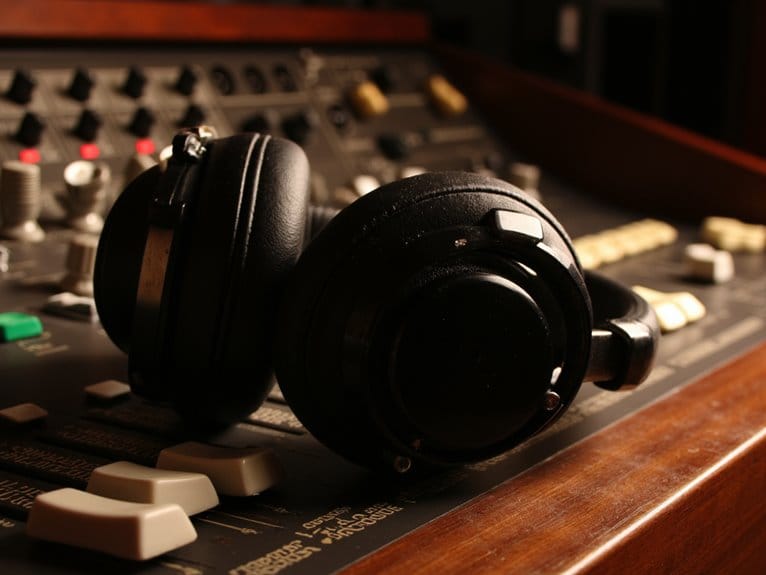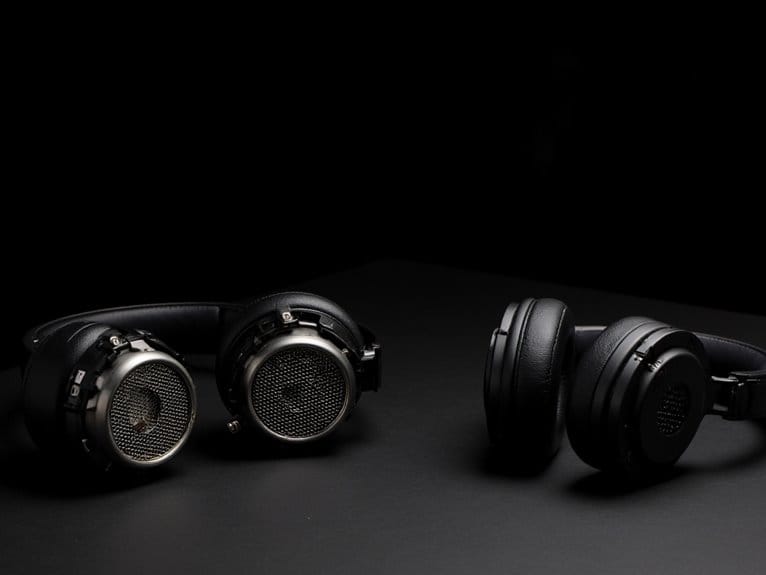Bass String Types: Roundwound vs. Flatwound Characteristics
You’ll find that roundwound bass strings feature spiral-wrapped round wire creating textured ridges that deliver aggressive brightness and exceptional clarity, making them perfect for rock, pop, and metal genres. Flatwound strings use tightly-wound ribbon wire for smooth surfaces that produce vintage, mellow warmth favored in jazz and blues. While roundwounds offer better tactile feedback, flatwounds reduce finger friction and fret wear, though they require potential truss rod adjustments due to higher tension-continue exploring to discover how these characteristics impact your specific playing style.
We are supported by our audience. When you purchase through links on our site, we may earn an affiliate commission, at no extra cost for you. Learn more.
Notable Insights
- Roundwound strings use spiral-wrapped wire creating ridges, while flatwound strings use ribbon wire for smooth surfaces.
- Roundwounds deliver bright, aggressive tones ideal for rock and metal; flatwounds provide warm, mellow sounds for jazz.
- Flatwound strings reduce finger friction enabling faster movement, while roundwounds offer better tactile feedback for aggressive playing.
- Flatwounds accumulate less grime and cause less fret wear, requiring minimal maintenance compared to roundwound strings.
- String tension differences between types may require neck adjustments when switching from roundwound to flatwound strings.
Construction and Materials: How Design Affects Performance
When I first started examining bass strings under a microscope years ago, I’ll admit I was surprised by how dramatically the construction differences between roundwound and flatwound strings affect their performance characteristics.
Both types start with hex-shaped steel core materials that provide essential strength and magnetic properties for your pickups, but the winding methods create entirely different playing experiences.
Roundwounds use spiral-wrapped round wire that creates ridges, delivering brightness and enhanced string flexibility, while flatwounds employ tightly-wound ribbon wire for a smooth surface.
The winding materials-whether nickel/steel alloy, stainless steel, pure nickel, or cobalt-significantly impact tonal characteristics, with each offering distinct brightness levels, durability, and output. Stainless steel provides superior rust resistance and longevity compared to other winding materials.
These construction choices directly determine how your strings feel under your fingers and sound through your amplifier. Professional bassists often rely on preamp pedals to further shape and enhance their string’s natural tonal characteristics in both live and studio settings. Roundwound strings can be particularly harsh on both fingers and frets during extended playing sessions. Keep in mind that switching between different constructions may require neck adjustments due to the varying tension characteristics each design produces.
Tonal Differences and Musical Applications Across Genres
After years of A/B testing different string types in my studio, I’ve discovered that the tonal differences between roundwound and flatwound strings aren’t just subtle variations-they’re fundamental sonic characteristics that can make or break your sound in specific musical contexts. Roundwounds deliver aggressive brightness with exceptional tonal clarity, making them perfect for rock, pop, and metal where you need cutting presence and harmonic richness. Flatwounds offer that vintage, mellow warmth that jazz and blues players crave, though their reduced high-end content limits versatility. The construction differences also impact playability, as flatwounds provide a smooth surface that reduces finger friction during extended playing sessions.
| String Type | Tonal Character | Genre Preferences |
|---|---|---|
| Roundwound | Bright, aggressive, detailed | Rock, pop, metal |
| Flatwound | Dark, mellow, smooth | Jazz, blues, Motown |
| Roundwound | High harmonic content | Modern styles |
| Flatwound | Fundamental-focused | Vintage applications |
Playability, Maintenance, and Practical Considerations
Beyond the sonic differences that define your instrument’s voice, the practical aspects of string choice-playability, maintenance demands, and long-term instrument care-often prove just as influential in determining which strings you’ll actually want to live with day after day.
Flatwounds offer dramatically reduced string friction, enabling faster finger movement across the fretboard, though their higher tension typically requires truss rod adjustments when switching from roundwounds.
Flatwounds deliver smoother finger gliding and faster fretboard navigation, but their increased tension demands careful truss rod recalibration.
You’ll find flatwounds gentler on both your fingers and frets, accumulating less grime while extending your instrument’s lifespan-particularly vital for fretless basses.
However, roundwounds’ textured surface provides better tactile feedback for aggressive playing styles, despite causing more finger soreness and fret wear over time.
On a final note
You’ll find that choosing between roundwound and flatwound strings ultimately depends on your musical priorities and playing style. If you’re chasing bright attack and versatility across genres, roundwounds deliver that modern punch, though they’ll wear your frets faster. Flatwounds offer smooth playability and vintage warmth that’s perfect for jazz, blues, and classic rock, but you’ll sacrifice some brightness and sustain for comfort.

